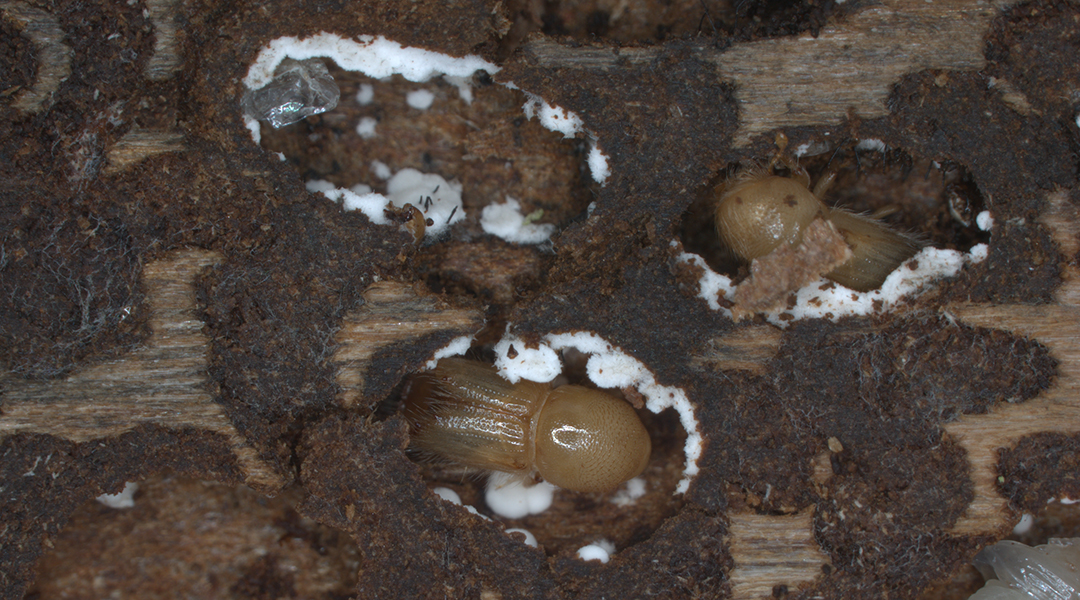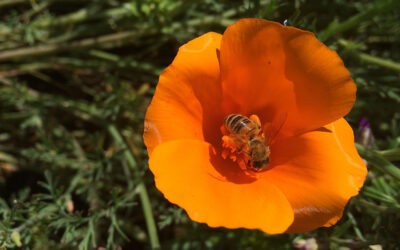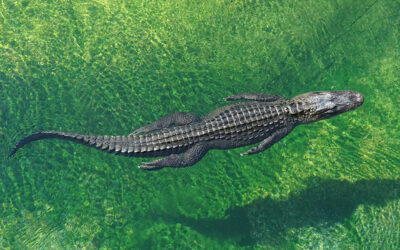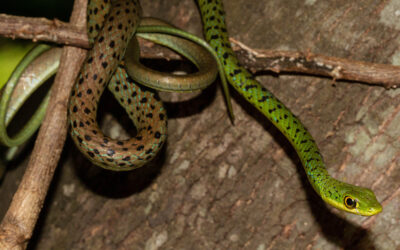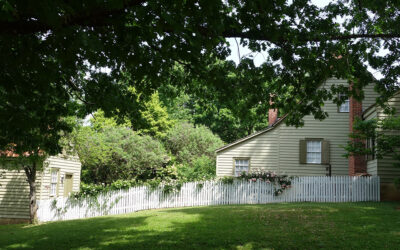The large spruce bark beetle, Ips typographus, is a pest that has destroyed several million hectares of coniferous forests in Europe. Digging into the bark of spruce trees, it mates and lays eggs there. When these hatch, the larvae make their way through the outer layers of the trunk, destroying water and nutrient transport pathways.
It has long been known that beetles mainly aggregate on host trees that are already colonized by beetles and certain fungi, such as Grosmannia penicillata. Presumably the fungi weaken the tree’s defenses, such as their natural resins which protect against pests. But this synergy between the fungus and the beetle in destroying the tree seems even stronger than expected.
Getting to the bottom of this special relationship
Researchers led by Dineshkumar Kandasamy, now a postdoctoral researcher in chemical ecology at Lund University in Sweden, investigated the nature of this prolific but damaging cooperation.
“Bark beetles and blue-stain fungi have a special relationship where they depend on each other to survive and reproduce in trees,” said Kandasamy. “The fungi rely on the beetles to move from one tree to another, while the beetles rely on the fungi to survive. In this study, we wanted to understand how the beetles and fungi keep their partnership going.”
To do so, they allowed the fungus to grow on a diet containing spruce bark powder and analyzed the substances released by Grosmannia fungus. “I was very curious about how bark beetles and fungi team up together to destroy conifer trees that are packed with chemicals toxic to most insects and microbes,” explained Kandasamy.
The results showed that the fungi converts terpene, a class of natural molecules found, for example, in resins and essential oils, into different volatile substances, which have an attractive effect on beetles.
“Fungi can turn the tree’s natural defense against itself by converting toxic resin chemicals into more attractive scents. “The beetles are able to detect the difference between helpful and harmful fungi based on the way they smell. This is the first time that this kind of communication has been observed between bark beetles and their fungal partners.”
The fungi not only attract the beetles but also stimulate them to tunnel, as behavioral observations have shown.
A coordinated effort
So how does this coordinated attack work? First beetles that arrive infest a spruce tree with fungi, weakening its defenses and at the same time emit these compounds to attract other beetles, which are then drawn to the weakened spruce tree. If the spruce is already weakened by prolonged droughts and high temperatures, the beetle-fungi duo has an even easier time.
These new findings could help fight these pests more efficiently in the future. So far, pheromone traps have been used to trap beetles. In recent outbreaks, these traps have no longer proved effective. “The inefficiency of traps during recent outbreaks could be due to missing components that are important for beetle communication,” explained Kandasamy. “We think the missing component is probably of fungal origin.”
Therefore, researchers are now testing whether the effect can be restored by adding compounds produced by the fungus to the traps. “By using this knowledge, we could create better and more eco-friendly ways to control pests,” said Kandasamy. “For example, we could use attractive chemicals produced by helpful microbes to make traps that are better at catching pests. This would help us manage insect pests more effectively while also being better for the environment.”
Reference: Dineshkumar Kandasamy, et al., Conifer-killing bark beetles locate fungal symbionts by detecting volatile fungal metabolites of host tree resin monoterpenes, PLOS Biology (2023). DOI: 10.1371/journal.pbio.3001887
Feature image: An adult beetle surrounded by the spores of symbiotic fungi (white layer) in the pupal chamber constructed under the bark of an infested spruce tree. Credit: Dineshkumar Kandasamy

